Dispelling The Myths About Yosemite’s Bears
by LA guide, Michael Misselwitz
If there’s one thing we know to be true about the bears of Yosemite National Park, it’s that plenty of myths exist about them. As stewards of the wilderness, it’s our job as guides to dispel those myths, and after decades of sharing the backcountry with our furry bear buds, we’ve learned a thing or two about the reality of bears in Yosemite. Here, we’ll set the record straight on some of the common myths associated with Yosemite’s bears, and share some pointers on how to carry yourself in the case of an encounter.

Myth #1: Grizzly bears live in Yosemite.
Truth: Grizzly bears once roamed freely in Yosemite, and were a dominant apex predator in the region long before it was ever declared a national park. In fact, the name “Yosemite” is thought to be derived from the Miwok word for grizzly bear, pronounced “Ooo-se-mah-te,” and it is said that while Yosemite’s earliest native inhabitants, the Awahneechi, were known to be cunning grizzly hunters, they also held great respect for the species. But with the introduction of western civilization into the region, grizzlies were perceived as a threat to modern society, and the last known grizzly in Yosemite was shot in 1895 at Crescent Lake. The skin of that bear can now be seen at the Museum of Vertebrate Zoology of the University of California.
Black bear are the only bear species in Yosemite today.
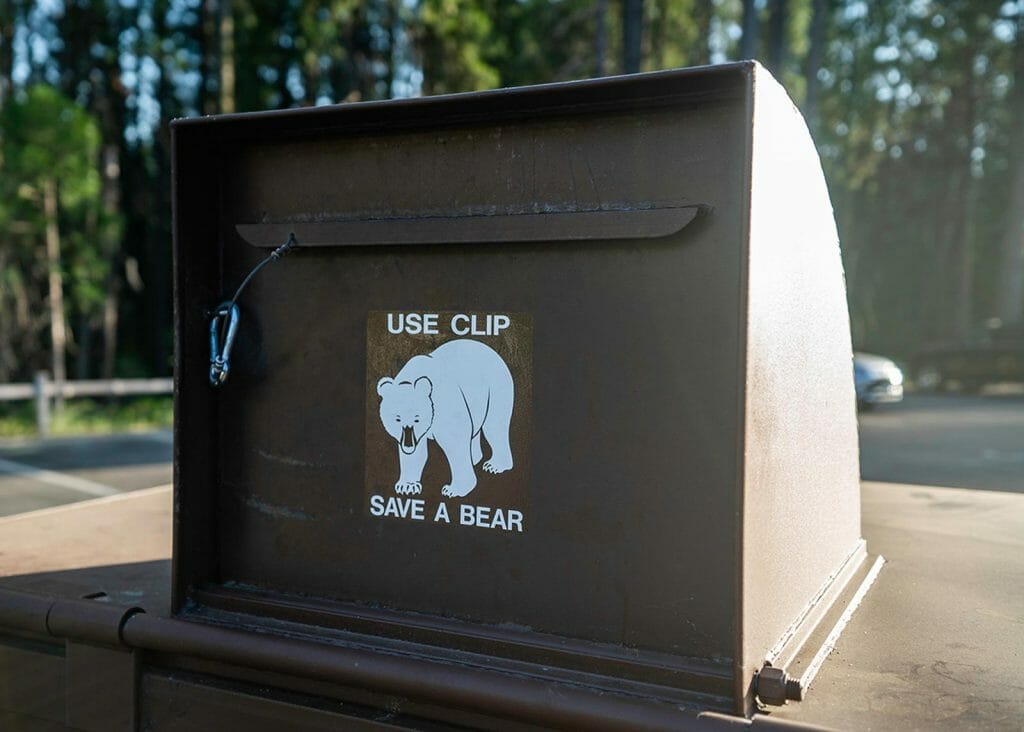
Myth #2: Yosemite’s bears are man-eaters.
Truth: Yosemite’s bears have no interest in eating humans, or any other large mammal for that matter. Black bears—the only species of bear in Yosemite—are actually quite timid and skittish around humans. Chances are, they’ll be more afraid of you than you are of them.
So, what do black bears eat? Unlike grizzlies, black bears are omnivores and their diet consists mostly of grasses and berries, with acorns providing a flavorful addition in Fall. Barring grubs and other insects, they tend to stick to a majorly vegetarian diet in the wild.
Unless they’re picking it out of trash cans, it’s unlikely that you’ll see black bears even eating fish in Yosemite Valley.
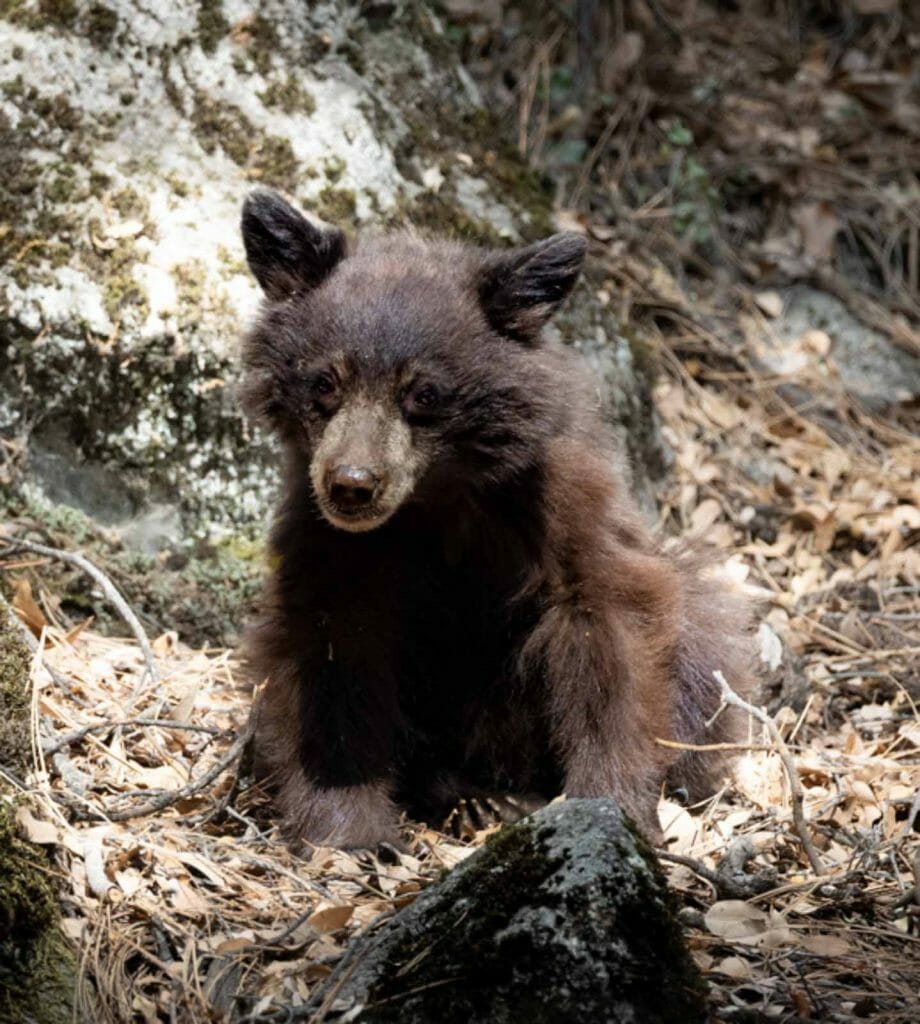
Myth #3: Yosemite bears are two-stories tall.
Truth: Contrary to popular belief, the black bears of Yosemite are actually quite small in size compared to grizzlies and other bear species. Where adult male grizzly are known to easily weight 1,000 pounds,
the average adult male black bear weighs around 250 pounds, with females averaging about 150 pounds in weight—roughly equivalent to an average male human.
The largest documented black bear in Yosemite weighed 690 pounds. Fully grown, black bears of the Sierra are usually not more than 60 inches in length, but can reach up to 7 feet tall on their hind legs.
Myth #4: You’re guaranteed to see a bear in Yosemite Valley.
Truth: Park officials estimate that only 300 to 500 black bear currently reside in Yosemite National Park. While that may seem like a lot, consider that this populous is dispersed across 1,169 square miles of land, an area roughly the same size as Rhode Island. While bears do tend to congregate in areas with abundant food, such as Yosemite Valley where human food waste abounds, they are also very timid around humans and prefer to keep their distance.
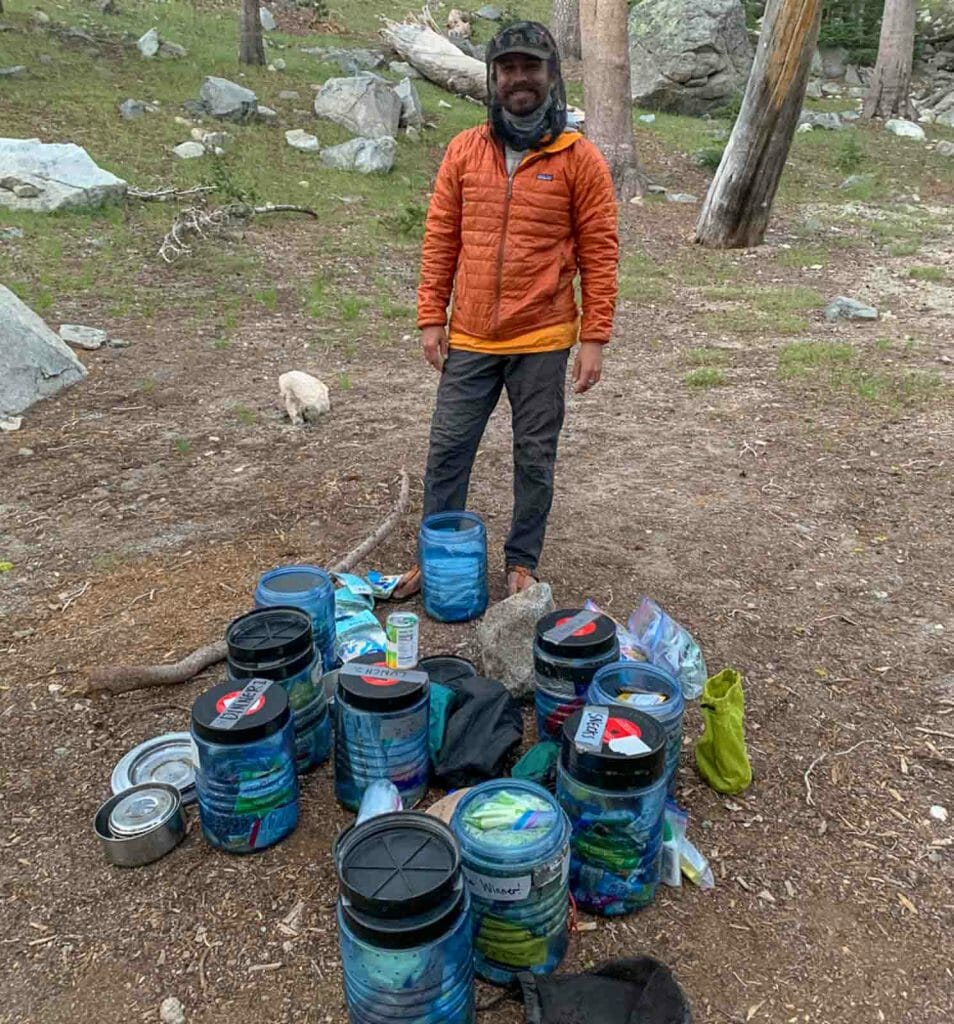
Myth #5: A bear won’t come into an inhabited campsite.
Truth: While black bears do tend to shy away from humans, a hungry bear in the wild will not be deterred by campers, especially sleeping ones and especially if smelly foods are left out to lure them into camp. Case in point…
Early in his career, LA founder Scott Gehrman learned this lesson the hard way, when he roused from his slumber to a bear leaning over him, sniffing the scented chapstick in his chest pocket.
To keep bears and other critters well out of your range from your Yosemite campsite, it’s important to comply with Leave No Trace (LNT) principles, which means practicing proper food storage. That leads us to perhaps the most important piece of bear advice we can give: CARRY ALL SMELLY ITEMS IN A BEAR CANISTER. Bear “cans,” as guides call them, are designed to protect food and other scented items from bears, and park rangers require that every group of overnight wilderness campers carry one. We recommend using Bear Vaults, which are provided on every Lasting Adventure and work great to keep bears from stealing supper. (They also double as great camp chairs.)
Myth #6: All black bears are black.
Truth: While all of Yosemite’s bears identify as black bear by species, most of them are hardly black. The vast majority of Yosemite’s black bears actually have brown fur that turns blonde or even silver with age. The older a Yosemite black bear is, the less chance it has of being truly black.

Myth #7: Bear sighting? Run for your life!
Truth: The aforementioned myth is actually the exact opposite of best practices for a bear encounter in Yosemite. Rather than running away, if you are in a developed area like a campground or parking lot, rangers advise, “if a bear approaches you, act immediately to scare it away: yell aggressively and as loudly as possible. The intent is not to harm the bear, but to scare it from the area and restore its natural fear of people by providing a negative experience.” Outside of developed areas, its best to keep your distance from the bears. A minimum of 50 yards is the rule of thumb; any less than that, and you’re helping the bear grow accustomed to humans (bad for both the bears and the humans). For more info on what to do if you see a bear in Yosemite, check out the NPS guide.
Myth #8: Every vehicle is at risk of being torn to pieces by a hungry bear. Park at your own risk!
Truth: It is rare for even one car to be broken into by a bear in a given year in Yosemite. When it does happen, it’s usually because the vehicle’s owner left food or other “smelly” items in the vehicle. Common knowledge in the park holds that you should not leave ANYTHING smelly in your vehicle, especially food (even unopened packages). If you do, there’s a slim chance your vehicle might be one of the few that gets accosted by a hungry interloper.
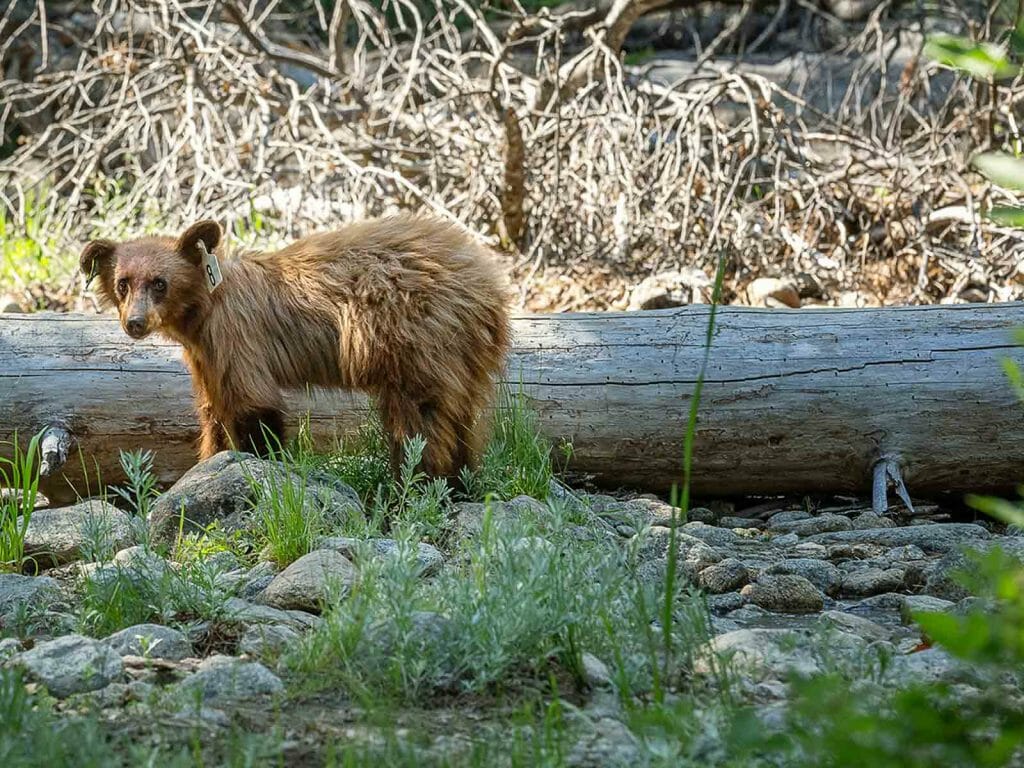
Myth #9: “Tagged” bears are bad bears.
Truth: If you do encounter a bear in Yosemite, you might see a plastic tag on one of the bear’s ears. These tagged bears are sometimes misconstrued as extra dangerous, especially if the bear tag happens to be red. But this is not a “red means stop, green means go” scenario. The tagging is done as part of the park’s bear monitoring system, and helps scientists track bears in their research. On the rare occasion that a bear is captured (usually to avoid its commingling with humans), the park service will sometimes tag a bear’s ear to help identify it in later sightings. According to the National Park Service, “Tagging bears is done for better monitoring, and the ear tag color is completely random, used to help quickly identify a bear. This effort allows scientists to follow a few of the 300 to 500 bears that live in Yosemite.”
Myth #10: Bears kill humans here every year.
Truth: There has never been a reported human death by black bear in Yosemite National Park. Sadly, rather, humans kill dozens of black bears each year in the park. Most bear deaths in Yosemite usually come in the form of car accidents, and they are so common that park rangers have a special sign to indicate an area where a bear has been killed by a vehicle. If you see a yellow sign with a red bear painted on it reading, “Speeding Kills Bears,” a black bear was hit and killed by a car in that location.
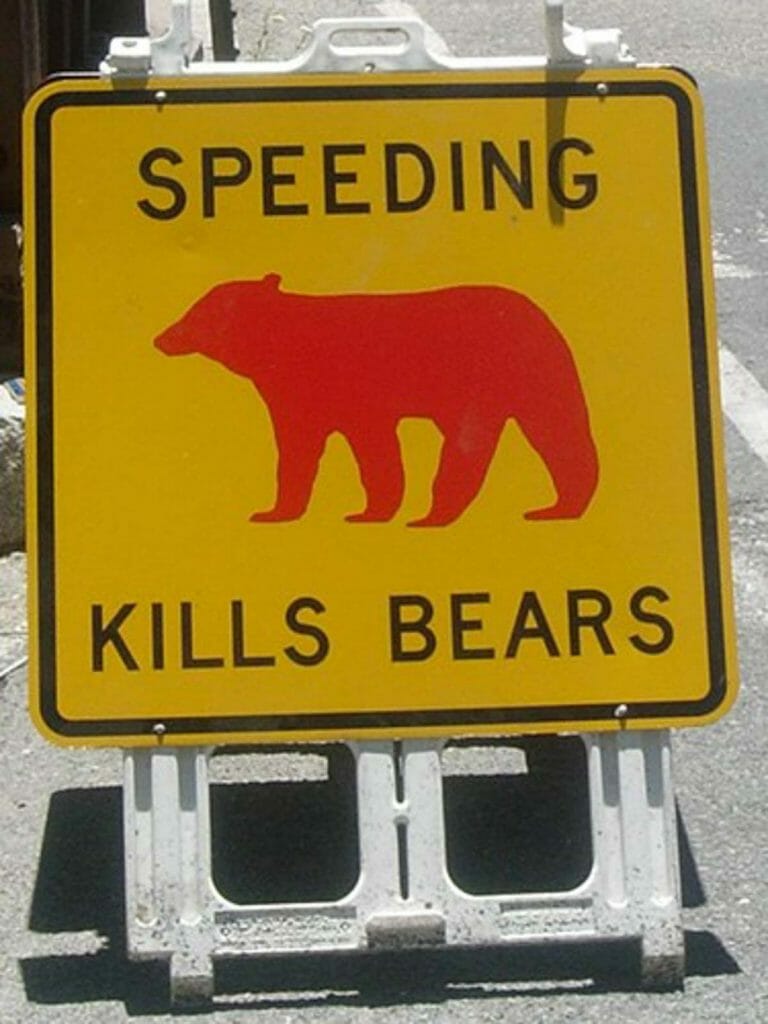
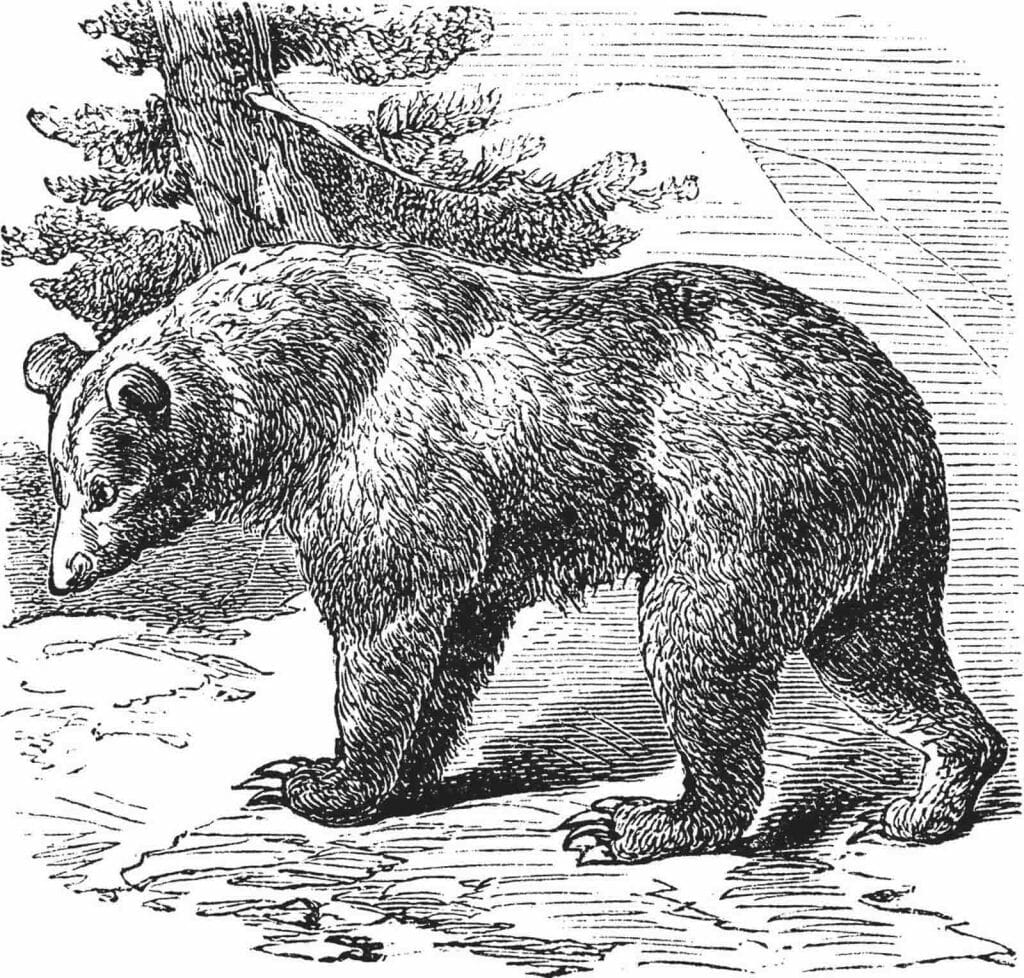
A guide’s favorite Yosemite bear story: The Sophisticated Taste of Grandma Bear
Among all the wilderness campsites in Yosemite, arguably the most breathtaking sits atop Snow Creek trail on the northern rim of Yosemite’s Tenaya Canyon. It’s stunning face-to-face view with Half Dome once attracted campers from all over the world, who came from far and wide to witness the splendor of its magnificent vista. Despite the quintessential view, however, this campsite was decommissioned in July 2016, and overnight camping is no longer permitted.
So, why close one of Yosemite’s best campsites? Two words, one legend: Grandma Bear.
With so many tourists visiting the Snow Creek campsite over the years, the area gained the attention of one the most famous and cunning bears in Yosemite’s rich bear history. Grandma Bear. Said to be more than 20 years old, Grandma Bear is quite the elder by bear standards, given that Yosemite’s bears are known to live a maximum of 30 years. With age comes wisdom, and with wisdom—for Grandma Bear—comes a fine taste for human food, as well as a remarkable method of tracking it down.
When it comes to stealing tourist food, few bears could match the crafty wit of Grandma Bear. Witnesses attest that Grandma Bear could sneak into a site full of campers in broad daylight, pick off a bear canister, and vanish with no trace (other than the missing canister). Aside from being supremely sneaky, Grandma Bear was also extremely clever, and developed a technique for holding bear cans in one paw whilst running on her other three legs. Where did she run? To her favorite cliff, where she proceeded to toss the bear can over the ledge. The cans, however mighty, could not withstand the 300-foot plunge. They exploded upon impact in the rocks below, only for Grandma Bear to safely descend around the cliff, and eat the spoils that she’d freed from within.
Rangers in the summer of 2016 reported that Grandma Bear had stolen nearly 100 bear canisters that same year.
As funny as Grandma Bear’s story seems, the accessibility of human food has harrowing impacts on Yosemite’s bear population. That is why, we cannot stress enough, that proper food storage is critical when visiting the park. Always remember that this is their home, and we are the visitors. Respecting the wildlife is critical to the sustainability of the ecosystem. We can all coexist if we take the necessary precautions.
Here’s a more sinister look at the Grandma Bear story and the impacts of human food on bears in this article by Outside Online.
MORE
NPS: Bear Management in Yosemite National Park
NPS: Recent Updates on Yosemite’s Bear Activity
A First-Time Rock Climber’s Guider To Yosemite
A Guide To The Trees of Yosemite










1 Comment